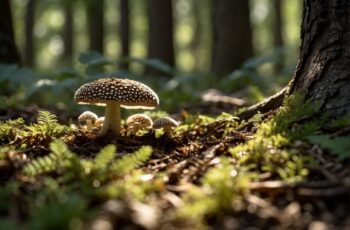The elusive yet captivating Morchella australiana, more commonly known as the Australian morel, is a true treasure to foragers and mycologists alike. Despite being a recent entrant to the scientific community, having been formally identified in 2014, this species of ascomycete fungus has stirred considerable interest. Found in select regions across Australia, including New South Wales, South Australia, Tasmania, and Victoria, its unique presence is a testament to the rich mycological diversity of the continent. Its discovery in the temperate Pilliga Scrub signifies just how much is still left uncharted in the world of fungi.
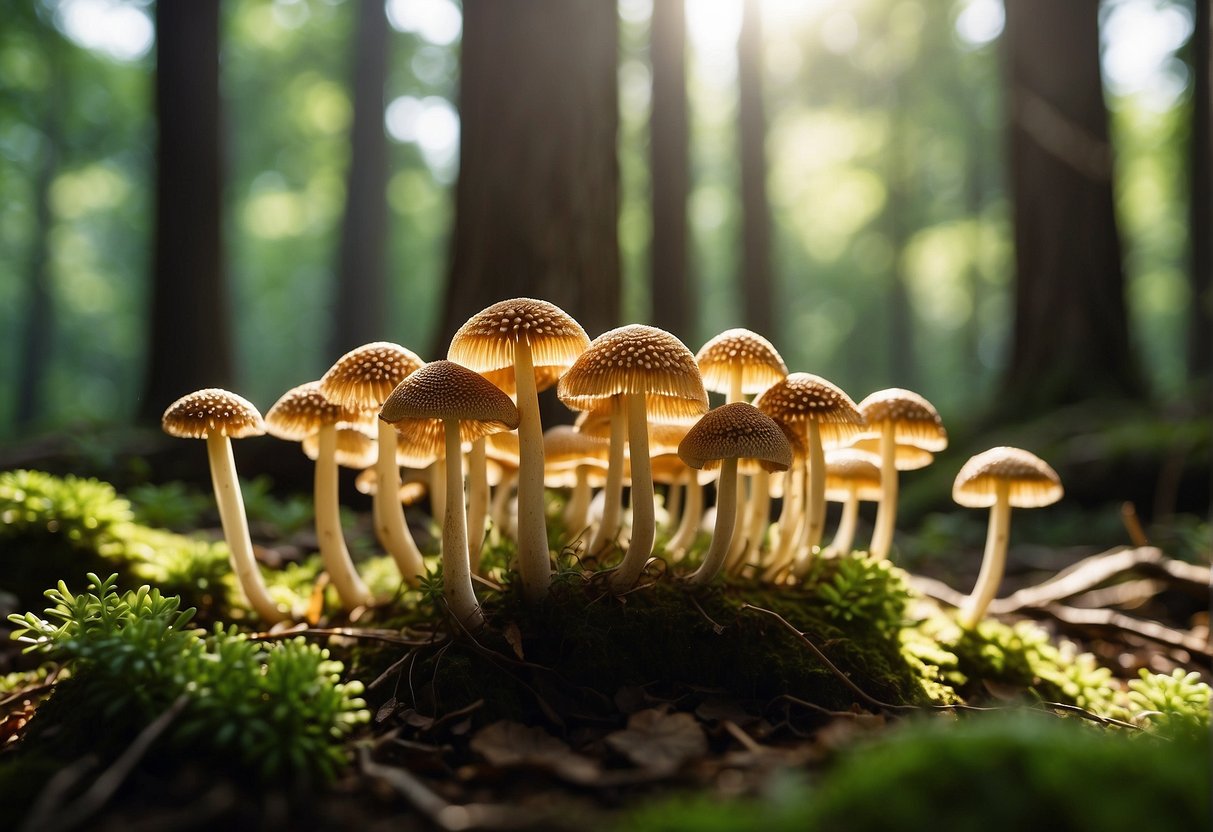
Morchella australiana is not your average mushroom. It thrives in specific conditions, favoring the wet climates characteristic of certain periods like a lush Australian spring. This species sports distinctive features that resemble its European counterparts but has unique attributes that define its classification. Your understanding of Morchella australiana is not just an academic pursuit—it’s a gateway to appreciating the intricate dance of nature’s biodiversity. For the outdoors enthusiast, knowledge of this mushroom enriches the experience of treks and forays into Australia’s wild, adding a layer of intrigue to every find.
Key Takeaways
- Morchella australiana was identified in 2014 and adds to the fungal diversity.
- Its habitat is specific to certain areas and conditions within Australia.
- Recognizing this species enhances the outdoor experience for nature enthusiasts.
Taxonomy and Classification
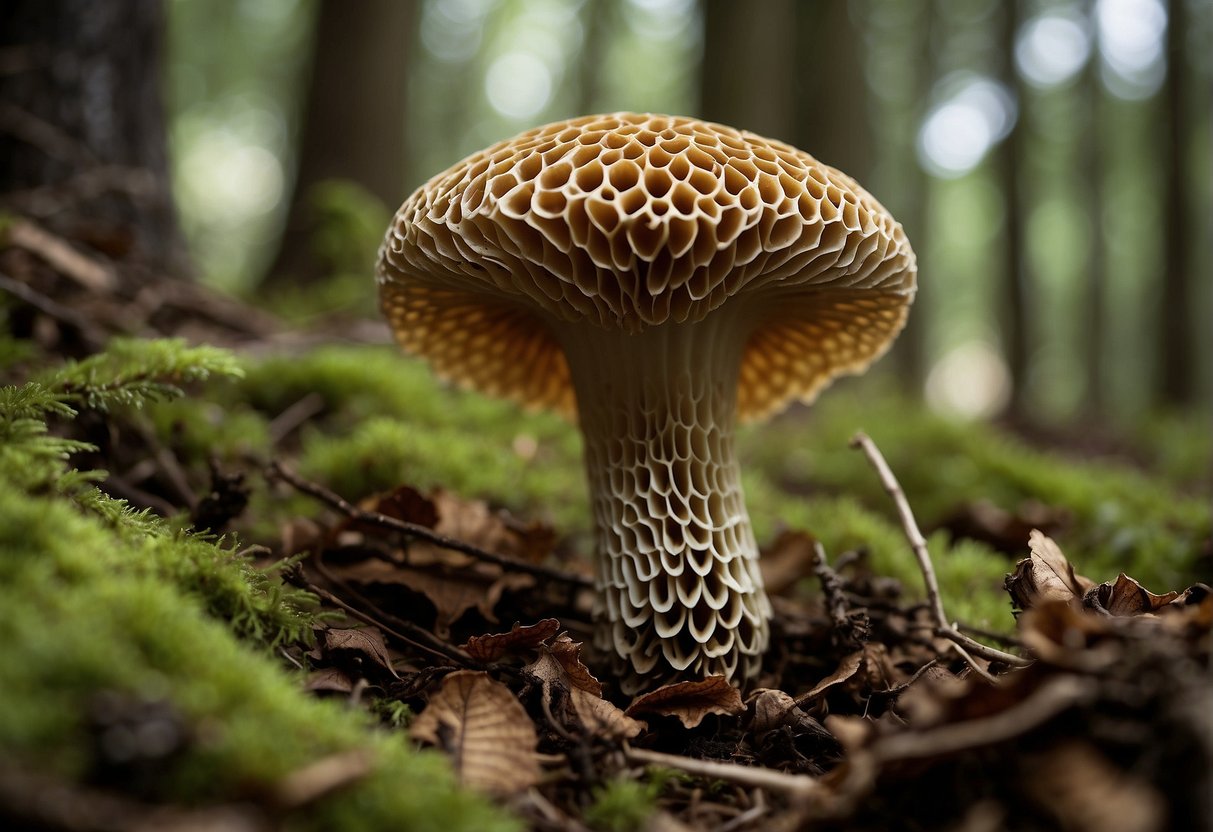
When you’re out in the woods, identifying mushrooms like Morchella australiana is more than a hobby; it’s a science. Mastery of their classification gives you a deeper understanding and appreciation for these fungi.
Genus Morchella
Morchella, your prize find, is a genus of edible mushrooms commonly known as morels. Morchella australiana, found in the woods of Australia, is a member of this genus. In the wilderness, spotting the honeycomb-patterned cap of these mushrooms is your signal of a Morchella’s presence.
Family Morchellaceae
The family Morchellaceae is where Morchella australiana finds its kin. This family comprises a group of morels that, to your trained eye, reveal much about the ecology of the area you’re exploring.
Order Pezizales
Pezizales, the order to which your find belongs, encompasses a variety of ascomycete fungi. When you’re rummaging through leaf litter or rich soil, remember that the mushrooms such as Morchella australiana that you come across are part of this diverse and ecologically significant order.
Class Pezizomycetes
Moving up in the classification, Morchella australiana belongs to the class Pezizomycetes. As you forage, remember that these types of fungi are not just a treat for the palate but also play a pivotal role in their ecosystems, breaking down organic matter and recycling nutrients.
Phylum Ascomycota
At the broadest level of its taxonomy, Morchella australiana is part of the phylum Ascomycota, a vast and varied group of fungi known for their spore-producing structures. This is the groundwork of fungal taxonomy that guides you in understanding the natural world of fungi you encounter on your ventures into nature.
Each of these classifications helps you, the outdoor enthusiast, to place Morchella australiana on the map of biological diversity and brings you closer to the natural world where these fascinating organisms thrive.
Distribution and Habitat
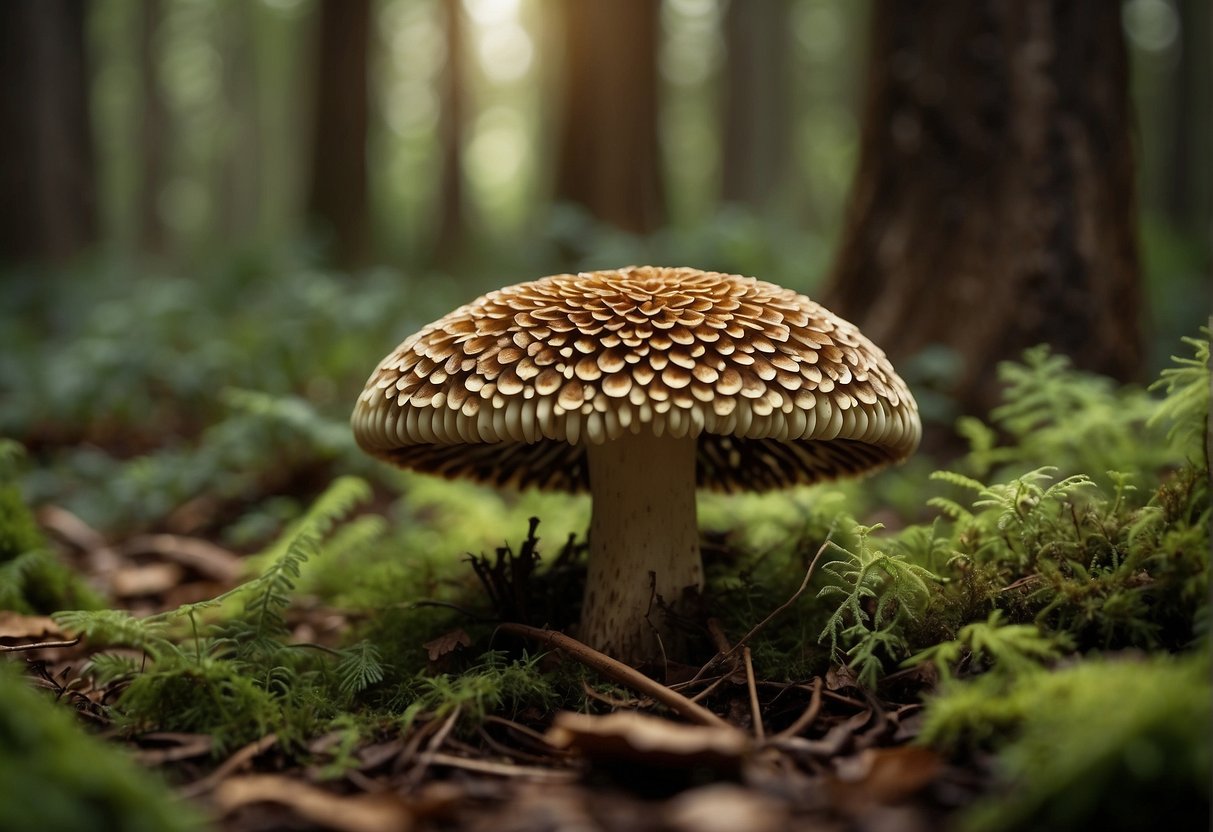
Morchella australiana, a treasured find for outdoor enthusiasts like you, thrives in select regions of Australia, truly a marvel of fungal biodiversity. Let’s explore the specific Australian habitats where you can encounter this exquisite species.
Australian Endemic Regions
Morchella australiana is a true gem for foragers, being an endemic species exclusive to southeastern regions of Australia. You’ll likely find these morels in New South Wales, Victoria, and parts of Tasmania. The presence of these morels in South Australia suggests that they may be adapting to various local conditions, extending their range within the continent.
Pilliga Scrub
In the iconic Pilliga Scrub, Morchella australiana was first identified, a discovery that made it an instant point of interest for mushroom enthusiasts. The Pilliga offers an extensive temperate forest and semi-arid woodland, an ideal environment for these fungi, often spotted in the cool months following rainfall.
Great Dividing Range
Your search for Morchella australiana might take you to the dense forests along the Great Dividing Range, where elevation and moisture create suitable conditions for morel growth. As they favor temperate climes, these ranges provide a perfect backdrop for their lifecycle.
Eucalypt Forests
Step into the aromatic eucalypt forests of Australia, where Morchella australiana coexists with towering eucalypts and woody callitris. These forests are often part of the sclerophyll habitat, which supports a diverse range of fungi, including your elusive quarry, the Australian black morel.
Ecological and Cultural Significance
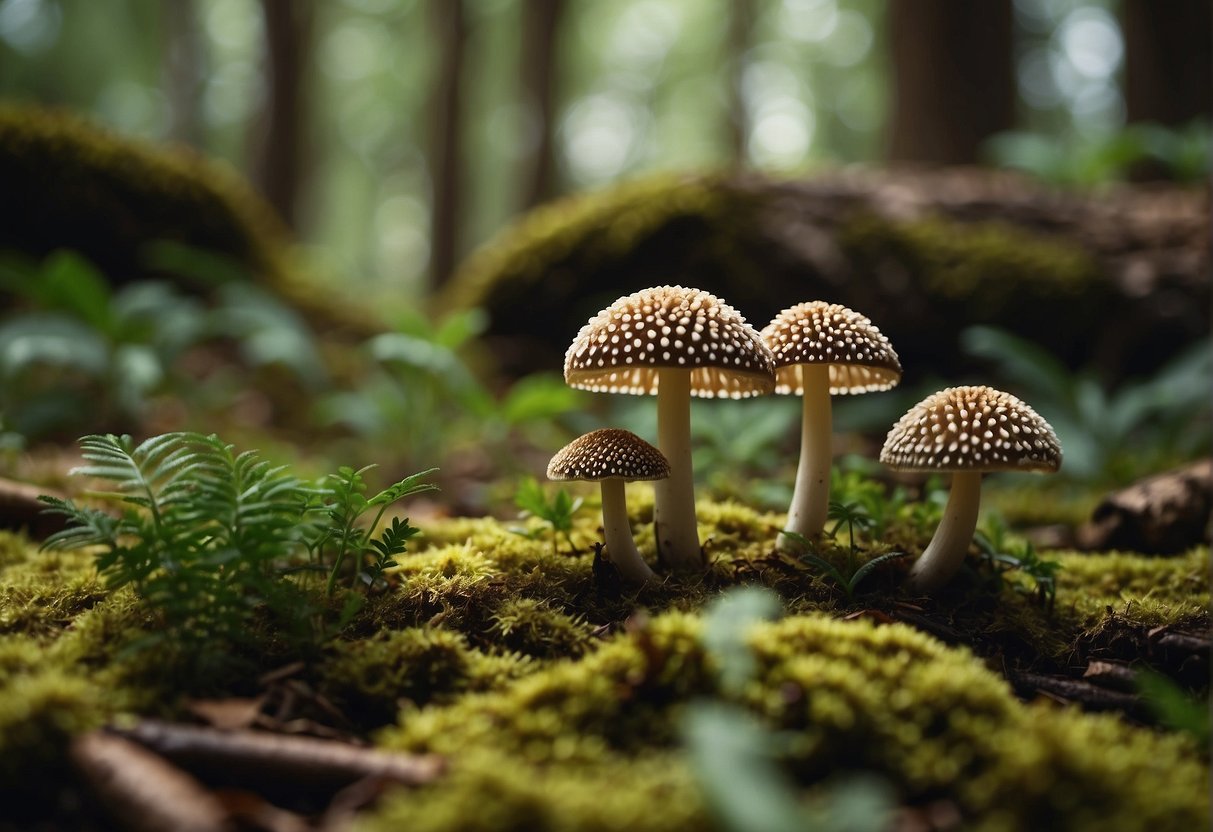
Morchella australiana stands as a beacon of biodiversity and an icon in mycological communities. Through its unique role in ecosystems and its value to local cultures, it’s a species worth your attention.
Biodiversity and Conservation
Morchella australiana is an indication of rich biodiversity and plays a pivotal role in forest health. Being an Australian endemic species, it contributes to the unique mycoflora of the region. Conservation efforts are vital, as these fungi form intricate relationships with plants and animals. The CSIRO and Atlas of Living Australia undertake efforts to map and understand this diversity, aiding in strategies for the conservation of these essential species.
Mycological Importance
In the realm of mycologia, Morchella australiana not only garners attention due to its peculiarities but also for its ecological functionalities. It’s a subject of interest for many mycological surveys. Its ability to form symbiotic relationships with plant roots aids in nutrient exchange, crucial for a thriving habitat.
Indigenous and Popular Use
Morels have long been intertwined with local lore and palate, finding their place in both cultural significance and cuisine. Morchella australiana, in particular, is no stranger to this tradition. It’s both a cherished find for the experienced forager and a delightful surprise for those new to the Australian outdoors. While it’s predominantly wild-harvested, its popularity raises discussions on sustainable foraging practices within these communities.
Your understanding of Morchella australiana is now rooted not just in its ecological role, but its cultural resonance as well.
Morphology and Biology
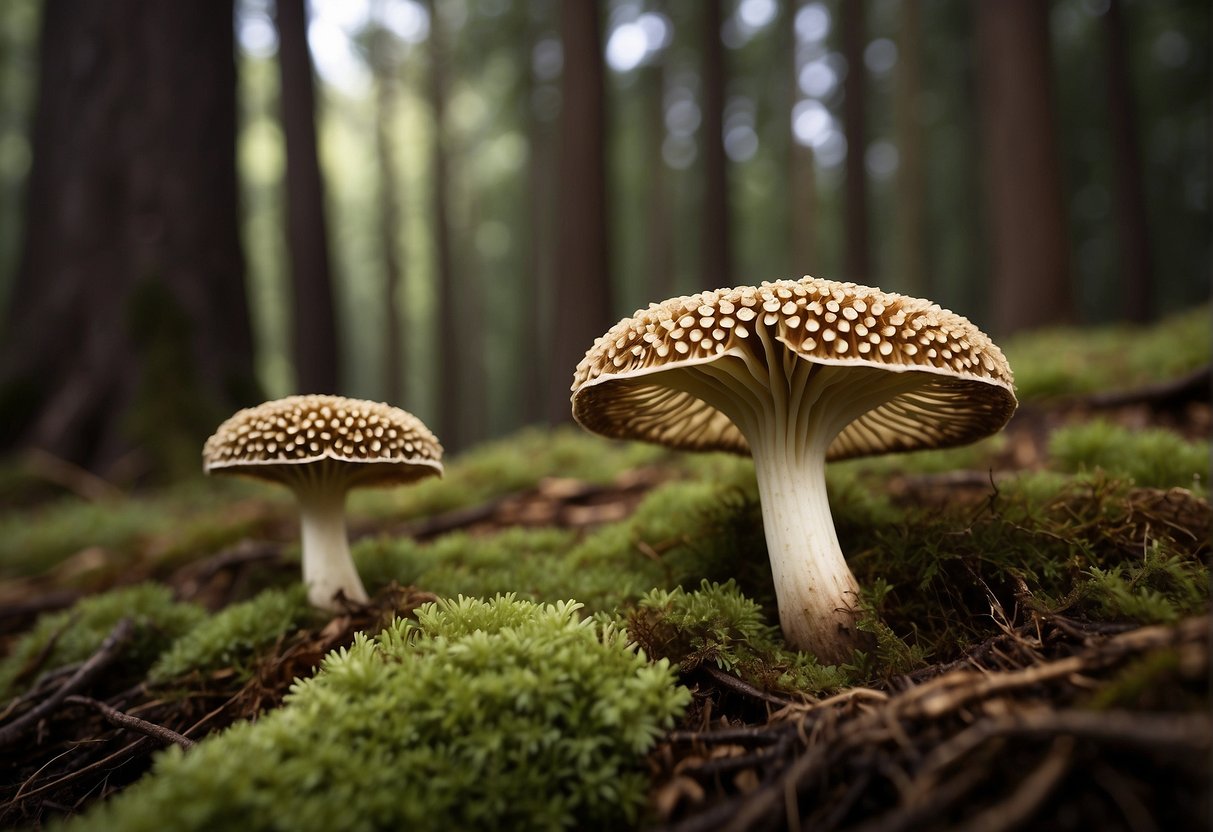
Understanding the defining features of Morchella australiana allows you to appreciate its unique placement in the world of fungi. This section will guide you through the distinctive physical characteristics, life cycle, and reproductive system of this remarkable species.
Physical Description
Morchella australiana, commonly recognized as a true morel, exhibits a distinct appearance with its caps that are pitted and ridged in a honeycomb-like pattern. The caps are generally brown with blackish ridges, a signature look among morels. What sets them apart is that they are part of a genealogically exclusive lineage, not seen in other morel species such as Morchella elata. The pubescent stipe or stem is another characteristic feature; it gives a slightly fuzzy feel conducive to the species’ overall survival.
Life Cycle
Your encounters with true morels often occur postfire, gaining them the name postfire morel due to their propensity to fruit prolifically following wildfire events. Morchella australiana, specifically, thrives in these conditions, initiating a unique life cycle that begins with spore dispersal and culminates in the development of fruiting bodies when conditions are favorable in their Australian habitats.
Reproductive System
The reproductive success of Morchella australiana partly lies in its efficient spore release. When you observe them closely, the reproductive organ, the cap, is covered with pits and ridges, enhancing spore dispersal to new areas where they can germinate. Unlike Morchella rufobrunnea, which is adapted to disturbed habitats such as gardens and orchards, Morchella australiana remains a wild species, relying on natural post-disturbance environments to spread and multiply.


